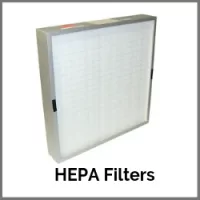The Essential Guide to Cleanroom Equipment: Ensuring Clean and Controlled Environments
Understanding the Importance of Cleanroom Equipment in Various Industries
In today's world, the need for sterile, controlled environments is more critical than ever. Industries such as pharmaceuticals, biotechnology, electronics, and healthcare rely on cleanroom facilities to ensure the quality and safety of their products. To maintain these pristine environments, the choice of cleanroom equipment is paramount. In this comprehensive guide, we will explore the types of essential cleanroom equipment, the role of cleanroom furniture, monitoring and control systems, considerations for selecting the right supplier, and best practices for maintaining this crucial equipment. As you delve into this guide, you'll understand how investing in high-quality cleanroom equipment can significantly impact the performance and success of your controlled environment.
Types of Essential Cleanroom Equipment for Maintaining a Sterile Environment
Cleanroom equipment serves as the backbone of contamination control. It includes a range of crucial components:
HEPA Filters: High-Efficiency Particulate Air (HEPA) filters are the workhorses of cleanrooms, ensuring the removal of particles and contaminants from the air.
Laminar Flow Hoods: These devices provide a continuous flow of filtered air to create a sterile working area, crucial in applications like pharmaceutical manufacturing.
Clean Benches: Clean benches offer an additional level of protection, providing a barrier between the work environment and the surrounding area.
Air Showers: Air showers are entry systems that remove contaminants from personnel before entering the cleanroom, significantly reducing the risk of contamination.
Gowning Racks: These racks are essential for the proper storage and organization of cleanroom garments, minimizing the risk of contamination during gowning procedures.
Particle Counters: Monitoring and controlling airborne particles is a key element of cleanroom operations. Particle counters are used to ensure that cleanliness levels are maintained.
The Role of Cleanroom Furniture in Ensuring Safety and Efficiency
Cleanroom furniture is designed to meet the specific needs of sterile environments:
Stainless Steel Tables: Stainless steel is a preferred material for cleanroom tables due to its resistance to corrosion, durability, and ease of cleaning.
Cleanroom Chairs: Designed for comfort and cleanliness, cleanroom chairs are an integral part of providing a safe and ergonomic work environment.
Storage Cabinets: Cleanroom storage cabinets are vital for the safe and organized storage of materials and equipment.
Workstations: Customizable workstations provide ergonomic workspaces tailored to your specific cleanroom needs.
The Importance of Monitoring and Control Systems in Maintaining Cleanrooms
Cleanrooms rely on sophisticated monitoring and control systems to maintain the desired conditions:
Environmental Monitoring Systems: These systems constantly monitor parameters such as air quality, temperature, humidity, and pressure differentials to ensure a controlled environment.
Pressure Differentials Monitors: Maintaining pressure differentials is crucial for preventing the entry of contaminants. Pressure monitors ensure that these differentials are maintained.
Temperature and Humidity Sensors: These sensors are vital for regulating temperature and humidity levels to ensure product quality and safety.
Selecting the Right Cleanroom Equipment Supplier: What to Consider?
Choosing the right cleanroom equipment supplier is a decision that can significantly impact the success of your cleanroom operations:
cGMP Compliance: Ensure that the supplier follows Current Good Manufacturing Practice (cGMP) standards to guarantee the highest level of quality in their products.
Expertise and Experience in Cleanroom Solutions Industry: An experienced supplier can provide valuable insights and recommendations for your specific requirements.
Quality Standards and Certifications: Look for suppliers that adhere to international quality standards and certifications, ensuring that their equipment meets the highest industry benchmarks.
Maintaining and Cleaning Your Cleanroom Equipment: Best Practices for Longevity
To ensure the longevity and effectiveness of your cleanroom equipment, it's essential to follow best practices:
Cleaning Procedures for Equipment Surfaces: Regularly clean surfaces with approved disinfectants and follow manufacturer guidelines for cleaning.
Regular Maintenance Schedules: Create a maintenance schedule to address wear and tear, and perform routine inspections to identify and rectify issues promptly.
Proper Handling and Storage: Train personnel in the correct handling and storage of cleanroom equipment to prevent damage and contamination.
Conclusion: Investing in High-Quality Cleanroom Equipment for Optimal Performance
Investing in high-quality cleanroom equipment is an investment in the success and safety of your controlled environment. The choice of equipment, furniture, and monitoring systems plays a pivotal role in maintaining sterility and efficiency. SyntecAirflowSystem, a trusted name in the cleanroom equipment industry, offers a wide range of innovative and cGMP-compliant solutions. Their commitment to quality, expertise, and adherence to industry standards makes them an ideal partner for your cleanroom equipment needs. By choosing the right equipment and supplier, and following best practices for maintenance, you can ensure that your cleanroom functions at its best, meeting the stringent demands of your industry and ensuring the safety of your products and personnel.



Comments
Post a Comment